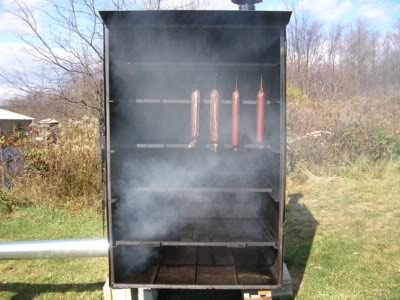Dehydrating Meat
Dehydrating meat serves dual purposes, namely to stop meat from spoiling and to be able to store it for a long time without freezing. Jerky, the common name for dried meat remains a popular snack food today. Just about any lean meat, poultry and fish can undergo drying quite easily under the right conditions. Good forms of lean meat for drying include beef, chicken, turkey, pork, and venison.
Preparation Before Drying
Before drying meat, you have to clean it and make sure that it is suitable for this purpose. It is extremely important to cut off as much fat as possible. Fat is a big part of the reason meat goes bad as it becomes rancid quickly. Also, cut away all connective tissues and organs from any cut of meat you intend to dry for storage.
If you can get your meat shop to cut the meat for you request that they cut the strips about less than ¼ inch thick as the thinner the easier to dry. Cutting against the grain is not the best way as the meat may end up being brittle.
NOTE: If cutting the meat yourself, put it in the freezer for about 30 minutes to make it easier to slice.
A basic seasoning of salt and pepper helps to enhance the flavor of the
meat after drying and you can add other seasonings such as soy sauce.
Cover the meat in a bowl and leave it to marinate for at least two
hours. You can boil the meat strips and marinate on a low fire for about
three minutes.
Remove meat strips and drain on absorbent
material. To remove bacteria that can cause illness, it is always best
to precook the meat before drying it.
Different Ways of Dehydrating Meat
First off, you can dry either raw or already cooked meat depending on the result you want and the time you have for this activity. Some common ways to dry meat for storage are freeze-drying, curing with salt and smoking. For the person who has no electricity or other modern conveniences, smoking and curing with salt are the better options for dehydrating meat.
Smoking Meat
The techniques vary a lot when it comes to smoking, but the ultimate aim is to add flavor and make the meat and fish safe for storing without needing refrigeration. Cold smoking results in meat that can last for up to 12 months. Cured or partly cured meat or fish are best for this method.
The process involves exposing the meat to smoke over a period of weeks. In the outdoors, the meat is hung over fires, and sometimes, special buildings exist solely for smoking and curing meat and fish. The ideal temperature for this process is between 75 degrees to 120 degrees Fahrenheit.
Curing Meat and Fish with Salt
Salting meat as a preservation method is ideal for some cuts such as pork and some types of fish. One method is to rub and cover the meat with salt pellets and leave to cure for about 8 weeks. The salt will work to remove moisture leaving the meat almost dry. You can also hang the meat in a room with a temperature of about 59 degrees Fahrenheit. After about three weeks, the meat should be dry and ready for use and storage. Check every few days to ensure that the smell does not indicate spoilage.
Using a Dehydrator
Using a dehydrator to prepare meat for storage is an important way to stockpile this source of protein. Dehydrating meat in a commercial dehydrator is simple and takes appropriately six to 12 hours depending on the thickness and type of meat. Rinse the precooked meat to remove all traces of grease before placing the strips onto paper towel lined dehydrator trays. The heat should be set at around 140 degrees Fahrenheit. The meat will be ready when it is hard without any trace of moisture.
In the Oven
Setting the oven at a low temperature, around 140 to 150 degrees Fahrenheit works well. Place the oven racks with meat strips into the oven, and ensure that the strips do not overlap. Leaving space between the strips helps with airflow and improves the drying process, and you can keep the oven door open about two inches to improve airflow. Drying will take eight to 20 hours depending on the thickness of the cuts. Check for dryness before cooling, that is, when there is no moisture and the meat strips crack.
Air Drying
While no longer a popular method, this may be the only way to dehydrate meat outdoors. After cleaning your meat and cutting into thin strips, hang the strips from a line in strong sunlight. The process will take several days to remove all the moisture. Use cheesecloth to protect the meat and keep away dust and flies. Hanging the meat in a location that is safe from animals is important for air-drying. You should put the strips inside at night to prevent exposure to moisture.
Dehydrating meat is a skill many people learn as a way to ensure a good supply of protein for themselves and their families in the event of a shortage. When done properly, most meats can last for up to two months in an airtight container. For longer lasting meat strips, put them in the freezer.
Return from Dehydrating Meat to DIY Survival Food







New! Comments
Have your say about what you just read! Leave me a comment in the box below.